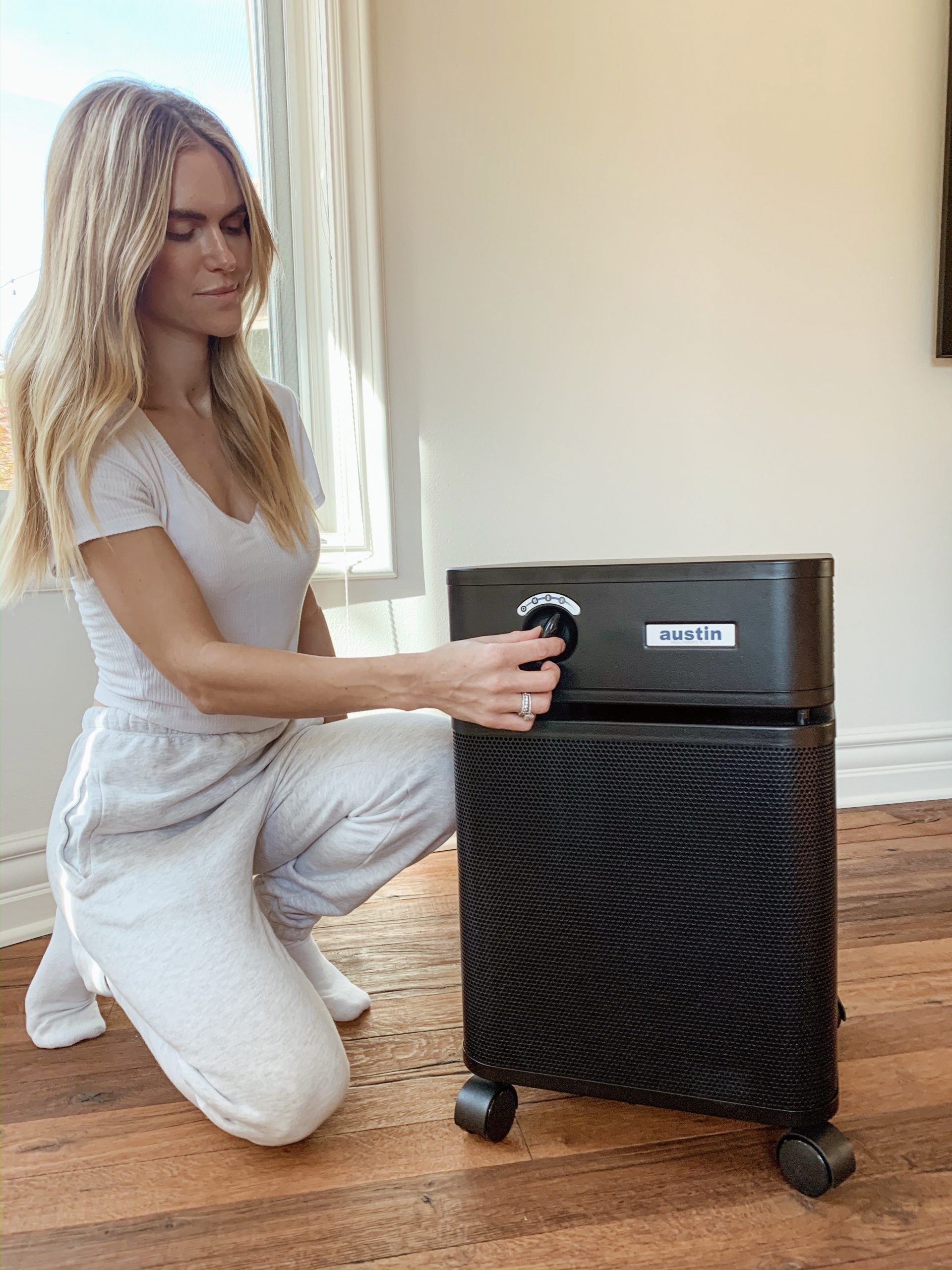We’re so excited about our brand new partnership!
This month, we’re teaming up with ‘Wellness Warrior’ Lauren Scruggs Kennedy. Lauren and her husband Jason Kennedy recently moved into their new home which is close to where the Woolsey Fire destroyed hundreds of homes last year. Living in an area that is vulnerable to wildfires, Lauren knows all too well how poor indoor air quality can affect our health.
Having just finished a complete remodel of their new home and although they have done all they can to minimize chemicals and VOC’s throughout the renovation, they are still concerned about indoor pollutants.
Here are a few to watch out for.
VOC’S
Volatile Organic Compounds or VOC’s is the term given to a variety of chemicals that are released into the air when we use everyday materials. Often odorless or masked by other more pleasant odors, VOC’s such as formaldehyde are known carcinogens, and have been linked to cancer.
VOC’s can be found in many of our everyday products. Cosmetics, cleaning products, air fresheners, paints, glues, flooring, particle board furnishing, bedding and laundry products can all emit dangerous VOC’s.
So, what can you do to reduce VOC’s in your home? Try to remove household odors, rather than mask them. Personal care products, household cleaners and air fresheners, often contain perfumes that release VOC’s into the air. Opt for natural cleaners such as baking powder and vinegar when possible. And choose products that are naturally scented or non-scented.
Like Lauren and Jason, look out for non-toxic or ‘low VOC’ products when remodeling, particularly when shopping for paints, flooring and ‘wood type’ furnishing.
Dust and Pet Dander
Carpets, rugs, cushions, throws, curtains, bedding, pillows, the list goes on. All soft furnishings are the perfect place for dust and pet dander to settle. For people with asthma and allergies, dust and dander are a major problem. Try to keep them to a minimum with regular vacuuming. And wash your bedding regularly, ideally at high temperatures. This keeps dust and dust mites away and guarantees you’re not sharing your bed with any unwanted guests!
Wipe down surfaces with a damp cloth and try to avoid ‘clutter’. This can be anything from old magazines and papers, to small ornaments and knick-knacks. Reducing the clutter makes your home easier and faster to clean, always a good thing.
Mold
Mold is a major source of indoor pollution and can be particularly problematic at this time of year. Keep an eye on high risk areas such as bathrooms and basements. Check regularly for leaks and ensure your home is well ventilated. A good ventilation system will help to reduce the risk of mold and also helps to stop other airborne pollutants from being trapped inside.
Nitrogen Dioxide
Do you have a gas stove? If so, you could be inhaling dangerously high levels of Nitrogen Dioxide in your kitchen. Nitrogen Dioxide or NO2 inflames the lining of the lungs making a person more prone to respiratory infection. NO2 is particularly dangerous for people with ongoing respiratory problems and can exacerbate symptoms of COPD and asthma.
If you have a gas stove in your home, ensure your kitchen is well ventilated. Range hoods are the most effective way to do this. But make sure the range hood is extracting the pollutants and not just recirculating them back into the kitchen.
Lauren and Jason did all they could throughout their remodel to keep chemicals and VOC’s to a minimum. However for complete peace of mind, they decided to run our Austin Air Healthmate Plus™ It’s clinically proven filter technology removes all the pollutants we’ve talked about, including smoke from wildfires, chemicals, dust, allergens, pet dander, VOC’s, formaldehydes and mold. Leaving the air in your home safe and clean.
For more on the Austin Air HealthMate Plus visit our shop page now.
